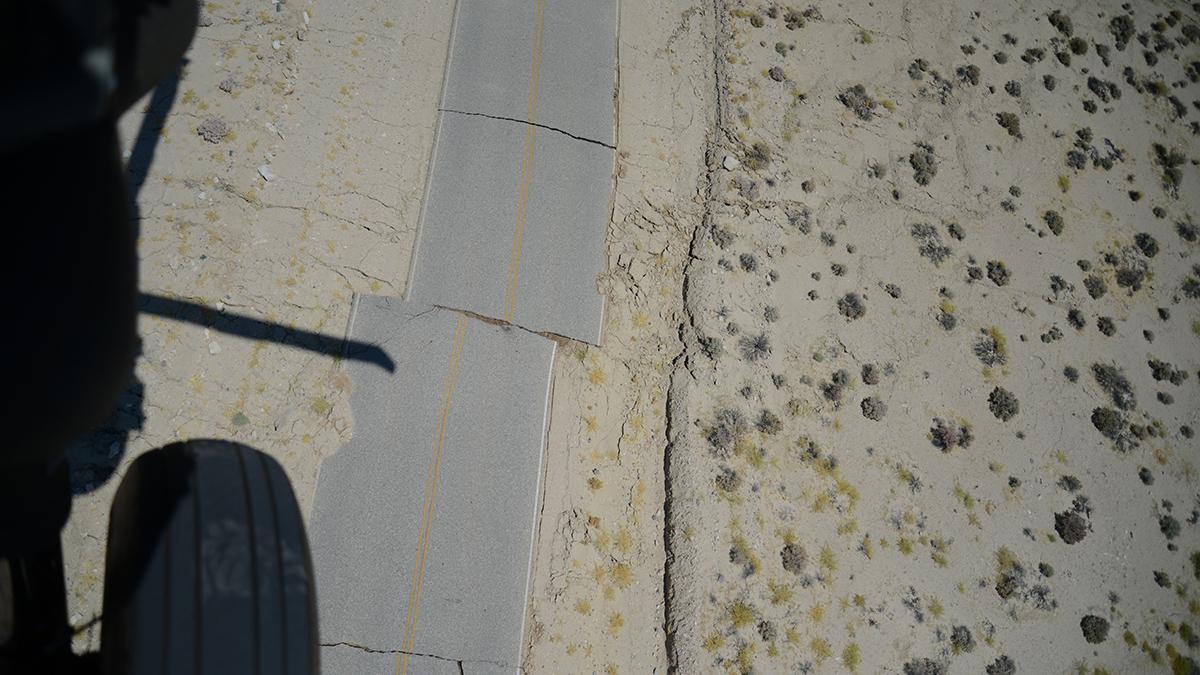Whether smaller earthquakes foretell larger ones is a long-standing question in seismology.
The answer is, in short, sometimes they do. That’s according to a new analysis of global earthquake activity.
It’s currently impossible to say when and where an earthquake might strike, but having a rough idea of where one may be imminent could conceivably save countless lives; even a few hours warning could prove immensely valuable.
Some major earthquakes are preceded by a sequence of smaller quakes commonly called foreshocks; however, they have so far been identified as such only after a larger event. Scientists have for years hoped to spot these precursors when they happen, potentially helping them forecast earthquakes.
“Just about any earthquake, at some level, will have multiple earthquakes associated with it.”
The new study evaluates years of seismic data from around the world to pick out statistical patterns in foreshocks and main shocks.
Some researchers argue there are small but noticeable differences in the properties of foreshocks that might telegraph warnings of a larger earthquake, such as the pattern of energy release and the distribution of earthquake magnitudes in an earthquake sequence.
“Just about any earthquake, at some level, will have multiple earthquakes associated with it,” said Thorne Lay, a seismologist at the University of California, Santa Cruz, and study coauthor. “The magic would be if there was some unique process or distinct character of events that ended up occurring before the biggest event.”
But other studies argue these foreshock indicators aren’t real or, if they are, aren’t useful enough to matter. A quake is defined as a foreshock only by its association with a larger earthquake, called the main shock. Foreshocks are everything that comes before the main shock.
“Foreshock is a very ambiguous term,” said Daniel Trugman, a seismologist at the Nevada Seismological Laboratory at the University of Nevada, Reno, who wasn’t part of the study. “It’s something that doesn’t have a whole lot of meaning in and of itself.”
Teasing the Fore from the Shock
To make foreshocks useful, seismologists would need a reliable physical or statistical signal that differentiates a precursor from a main shock. For that, they need better data about when foreshocks occur and what they look like. To that end, Lay and his colleagues applied three different algorithms that automatically detect clusters of earthquakes in the U.S. Geological Survey’s global earthquake catalog to pick out foreshocks from other earthquakes. The researchers built on their earlier work with eight regional earthquake catalogs.
In the new study, published in Seismological Research Letters, the researchers looked only at earthquakes above magnitude 5.0 and considered only main shocks above magnitude 7.0, a cutoff necessary because of the varying comprehensiveness of global earthquake records. Using three different clustering algorithms let them recognize any biases in one particular method, Lay said.
The researchers found that anywhere from 15% to 43% of the earthquakes they analyzed had recognizable foreshocks. Importantly, Lay said, though the three algorithms gave different numbers, their results tended to agree with each other.
“This is really a question of statistical significance versus practical significance.”
The researchers also found hints that some faults may be more prone to foreshocks than others, useful information for potential earthquake forecasts. Earthquakes caused by tectonic plates pushing together were more likely to have foreshocks than those caused by plates sliding next to each other, and earthquakes in the western Pacific had more foreshocks than those in the eastern Pacific.
“That says there is something going on that is useful about these sequences,” Lay said.
Those differences are on the order of a few percentage points, though, which may be too small for the purposes of earthquake forecasting.
“This is really a question of statistical significance versus practical significance,” Trugman said.
Indeed, Lay notes he’s less optimistic now that foreshocks will ever prove to be useful for earthquake forecasting than when he first began researching them.
“It’s a frustratingly difficult problem to work on,” he said.
Building to a Breakthrough?
This kind of research is, nonetheless, useful, argued Martijn van den Ende, a seismologist at the Université Côte d’Azur. More observations could help scientists to discern patterns in foreshocks, should they exist, and teasing out regional differences is also important for understanding foreshocks in different settings.
“I think there is great potential, but because we rarely see these very clear, beautiful sequences, it is very difficult to look in a very targeted way at the data,” he said.
Trugman also noted that Lay and his coauthors constrained their data set in ways that made finding patterns more difficult. They didn’t include earthquake swarms or sequences that included two main shocks very close in magnitude to each other. Those events could hold additional insights into foreshocks, he said.
It’s also possible that many foreshocks are simply too small to be reliably picked up by scientists. A 2019 paper that Trugman coauthored argues that including earthquakes down to magnitude 2.0 or 3.0 greatly expands the presence of foreshocks, though others disagree.
It may be that with more and better data, foreshocks could be the earthquake precursor signal seismologists have long sought. But for the moment, scientists can do no better than guess at whether a given earthquake represents a true foreshock or is simply an isolated incident.
“Distinguishing between those requires some new quantum of information that we do not yet have,” Lay said.
—Nathaniel Scharping (@nathanielscharp), Science Writer

